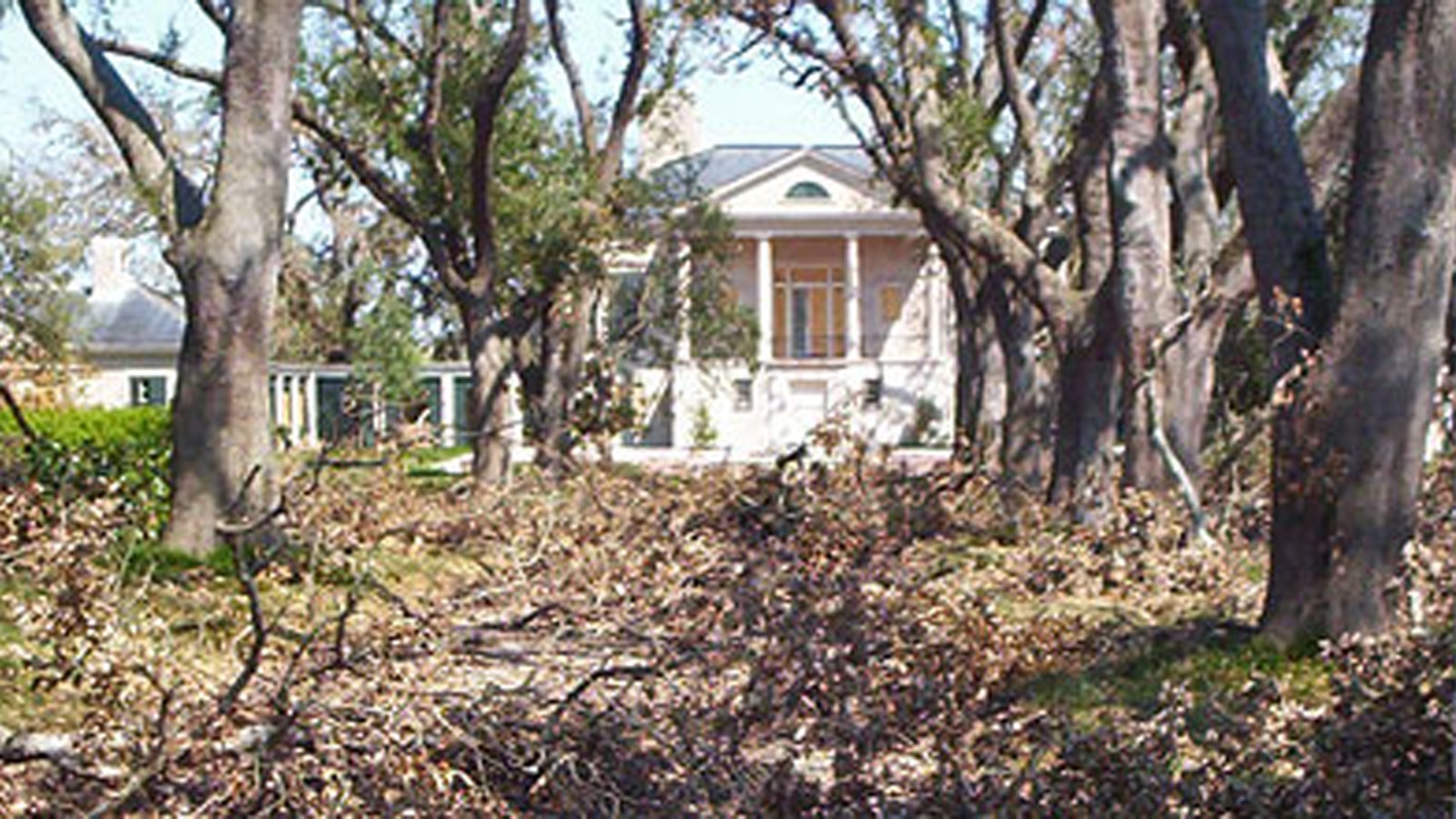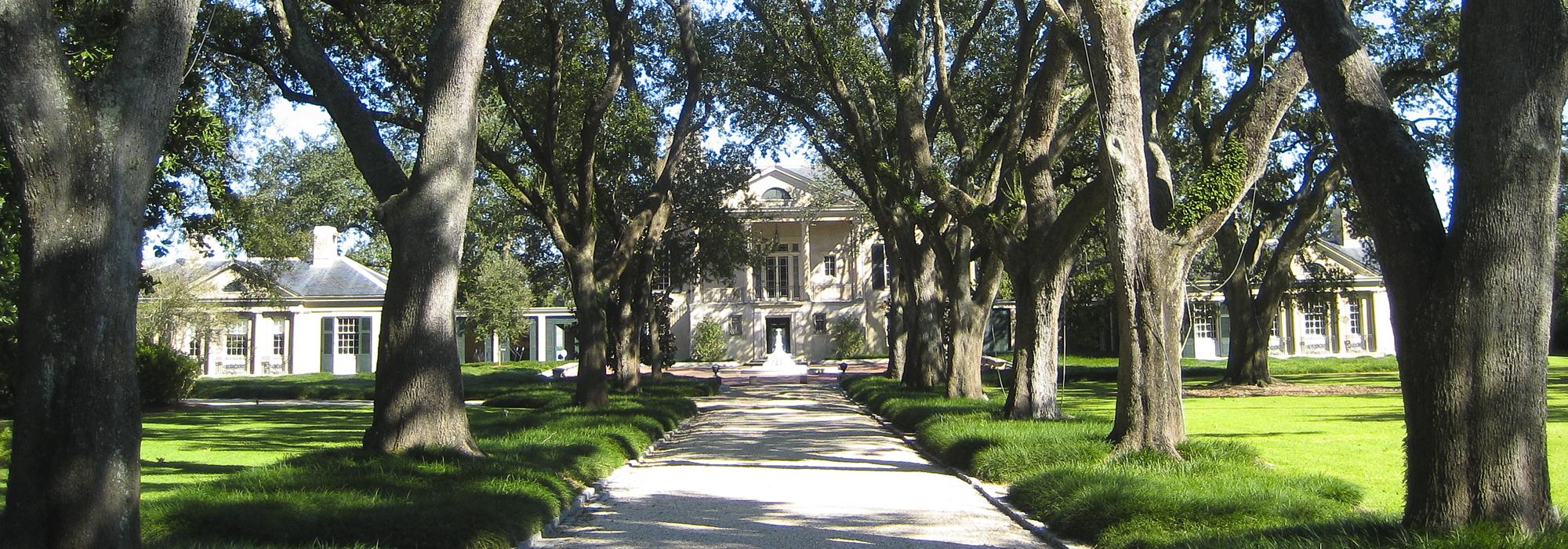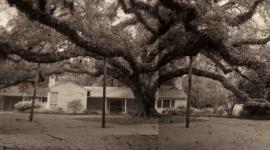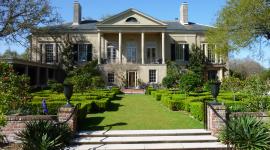Building in the Aftermath: Rebuilding the Big Easy, Not so Easy

The following is from a paper given by Suzanne Turner at the National Building Museum, November 14, 2005.
I want to thank all those design and planning professionals who have shown such concern for our region. The first thing that I realized after the storm was that a disaster immediately shows people for who they truly are-either selflessly generous, or opportunistic. Fortunately, there were many more of the former.
Clearly any discussion of recovery from Katrina needs to be grounded in landscape issues, although some planning in another state is well underway with little grounding in the sensitive ecological systems that are at the heart of the storm's impact in both the urban and rural landscapes.
I want to speak about the perspective that landscape architecture brings to the challenge of rebuilding New Orleans and its regional landscape, but it's just as well that you know the other lenses that color the way I see things:
-
our only child was to have begun her freshman year at Tulane this fall, I had just put the sheets on her bed in the dorm room when we were told to evacuate. Only yesterday were we allowed to return to retrieve her belongings from her dorm room where they had been since the Saturday before Katrina.
-
I am the daughter of an industrial contractor for whom the oil and gas industry is key, and my mother's family grew sugar cane until it became economically unviable thirty-five or so years ago; they have large land holdings where virgin cypress timber was a principal source of income for a century, now replaced by oil and gas leases;
-
I have spent most of my academic career studying the history of the landscape of south Louisiana and the Gulf Coast, particularly that of the New Orleans French Quarter and the sugar plantations along the Mississippi River; It is my belief that good planning and design must be informed by the past of a place, and that means the history of how people have interacted with place-not just series of events. It is the story of the interactive process of how place shapes culture, and culture shapes place.
-
And I am co-founder of a local non-profit that runs farmers markets and promotes sustainable agriculture in the region.
These pieces of who I am also explain in part how I ended up in the profession that I have practiced and taught for a quarter century.
Landscape architecture is perhaps the broadest of the disciplines that shape the built environment, and in facing a challenge like post-Katrina New Orleans, having a broad perspective is everything.
I want to begin with a few images, not in pictures, but in simple words. After Katrina we had no power in Baton Rouge for a week, and only heard and read about what was happening in New Orleans. Somehow, once the power was restored, I found myself not really wanting to watch TV. I think we've seen too many pictures, and pictures have very little to do with the nature of this experience. It is far too profound to be flattened into a frame. It is too sad to be seen. And a picture cannot really portray hopefulness, and I saw much of that in New Orleans yesterday.
-
My first image is of a red hawk that I spotted last week, high up in the branches of the old and declining American elm across the street from my house in Baton Rouge. It was midday and the hawk had just swooped down and grabbed a pigeon that he was in the process of devouring for lunch as I watched him from my front porch. He had no inhibitions when he saw me see him. I have never seen a hawk in town; my husband who works in a rural area all day says that the hawks that typically frequent the fields this time of year as sugar cane is being harvested are not around this year.
-
My second image is of the cars being burned in the Paris riots last week, and that image is side-by-side in my mind's eye with the image of the chaos and violence in the Convention Center days after the flooding in New Orleans. I cannot help but see the two as very related, and the French cultural roots are a part of that relationship.
-
My final image is of the live oaks in New Orleans' City Park. The park is one of the nation's largest urban parks, and was under water for days after the levees broke. Built as a WPA project to put people back to work in the Depression of the 1930s, it is home to the Botanic Garden, the New Orleans Museum of Art, a new world-class sculpture garden, a golf course, horse stables, and acres of ancient and noble live oaks, some thought to be 500 years old.
Yesterday as I drove through the park, many of the dead plants had been removed from the Botanic Gardens, and already some new ones had been planted, and workmen were hanging lanterns in some of the oaks in preparation for the opening of Christmas in the Oaks, one of the few revenue sources for this under-funded, heavily-used urban space that is perhaps the most devastated of New Orleans public landscapes.
Near the football stadium in the park, hundreds of trailers, tents, lean-to and makeshift shelters were scattered around the parking lots and under the surviving oaks, forming a squatters' village of relief workers and others in need of a place to sleep and eat.
These images represent a range of impressions that I have: 1. People aren't the only part of this landscape that have been displaced and we are only beginning to see the effects of the storm on the natural systems; 2. environmental justice causes violence without a hurricane as catalyst, and the problem is universal, not just New Orleans's; 3. people and trees can regenerate under the right conditions.
We've heard many versions of what the critical issues for the city are, and more versions of potential solutions, and there is no simple solution. We can all agree that it will require the collective talents of all of our disciplines working in concert to begin to make a difference. I only want to offer some thoughts on how the profession of landscape architecture can contribute to the process of moving New Orleans toward recovery. First a few basic assumptions that I trust we can all agree upon:
-
The Gulf Coast is not a political unit so much as it is a critical edge of our continent, and therefore its health is the concern of all North Americans, not simply those who happen to live within the political borders of the states that are bordered by it. The health and protection of the coastal wetlands is important for feeding and fueling the country, not just a few states.
-
New Orleans as the gateway to the Mississippi is much more important than just another city along the river-it is the beginning or the end, depending upon your perspective. Its culture is a direct result of it being the point of arrival for so many from so far, and it has managed to retain that difference.
-
There is a finite life to the production of oil and gas in the region. Most predictions of its limit say about thirty more years. Any re-imagining of the city of New Orleans and the surrounding region ought to consider what the shift away from oil and gas, and the replacement of these huge refineries that surround the city up and down the river might mean for the city.
-
The city is surrounded by some of the richest agricultural land in the world; the climate provides for year-round food production. The methods employed by New Orleans ' early planters were sustainable; land that was in sugar cane in the 1700s is still viable for its production today (if it were not for the artificiality of the world markets).
-
Vegetation, particularly live oak trees, substantially mitigates the effect of damaging hurricane force winds; reforestation should begin as soon as the destroyed vegetation can be removed.
-
As we learn more about the issues of health and disease, food miles, slow food, etc., the potential return to agriculture is worth exploring. The culinary heritage of the city should be a part of its plan for recovery.
-
The process of rebuilding cannot be discussed without first acknowledging that there is no reason to rebuild the city if the plan does not provide for the people of the city, in all their diverse forms, to come back to the city and to be an integral part of the process of determining the city's future and the actual rebuilding.
-
New Orleans has always been a mecca for artists. It has also produced some very creative people. Part of what promotes this creativity is the culture that places a value on creativity in all its guises-plasterwork, painting, mimicry, costuming, dancing, disrobing.... There is an attitude of tolerance that promotes creativity.
-
Mistakes have been made-huge mistakes, environmental mistakes, social justice mistakes, political mistakes, ethical mistakes. They must be owned, they cannot go unchanged.
But even if there's general agreement on facts, there's a world of range in terms of how to begin to conceive the recovery process. And I think that it is in defining the point of departure for the plan that the disciplines probably distinguish themselves.
Because landscape architecture's point of departure is the intersection of culture and place, I think the place to begin has to be in addressing the return of the city's population-those who want to return-and in ensuring that the disenfranchised who are now also the homeless for the most part-have a reason to return-a possibility to be trained for a job in the rebuilding, and the chance to live in some form of temporary community that replicates the kind of supportive social networks that existed before the storm. In other words, the starting point has to be the coordination of the cultural process of restoring people to a sense of home, with the engineering and design process of restoring the ecological and infrastructural systems that support urban life.
New Orleans needs to engage the creativity of the best minds possible to make certain that the infrastructural rebuilding is more sustainable than before, that it looks forward rather than back, that it becomes a more transparent part of the way that people experience the city so that the relationship between these systems and the city's safety is ever-present in people's awareness. And infrastructural improvements might be combined with recreational corridors, and agricultural opportunities, building upon the already well-established community gardening efforts underway in some of the Vietnamese and other ethnic parts of the city.
New Orleans is a great example of "old urbanism"-real urbanism, a city that grew organically over time, very much aware of and dependent upon its natural systems. New Orleans was not sited where it is, below sea level and in its precarious relationship to the river, the lake, the Gulf and its wetlands, from ignorance or from arrogance or lack of respect for the powers of natural forces. Choices were made, informed choices based on the realities of the time-like all planning decisions are made. And at the time, and for the foreseeable future, military defense and access to commercial markets were the highest priorities. Floods were almost annual events, they were anticipated. Levee building was a part of every land-holder's responsibility. Rebuilding after flood damage was not uncommon.
The issue of responsibility is huge and, of course, those who suffered the most, are unfortunately not those who lapsed in their responsibility. But the more broadly that responsibility is shared, the safer, the more responsible its residents will be to each other, rather than the dependence they find themselves trapped in right now.
Ultimately the best plans will be those that facilitate the organic regrowth of those portions of the Crescent City that were so devastated by Katrina's floodwaters. I think those watching the city from outside underestimate the powerful pull that the place has on people who have lived within its urban core. Decay is often touted as part of the city's charm. That is no longer an acceptable way to think about or describe the city-patina, perhaps, but decay, no. Patina is not produced quickly if it is to have authenticity. But for a metal to develop patina, it must have an atmosphere that is healthy, that promotes development of all its elements equally; and this is the part that New Orleans has a chance to get right for once-after a couple of centuries of missing the boat.






